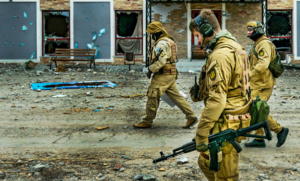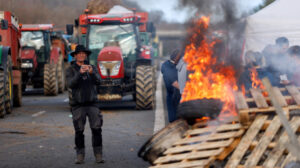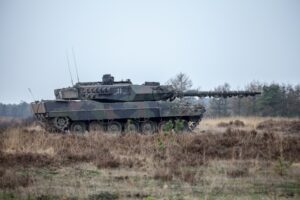“The situation in the city is very, very bad. The Russian occupiers are increasing their presence all the time. They ride around the city with impunity and break down the doors of houses and apartments. Soldiers usually come at around midnight and start searching for evidence of partisan activity. Often, they just take people away. Now they’ve turned their attention to officials. A few days ago, they arrested the mayor and some members of the city council. It’s getting worse…”
This message, from a pro-democracy activist inside Kherson, reached me via an intermediary on Wednesday evening. It’s getting harder by the day to find out what’s going on in the region — especially inside the city. A lifetime ago, back in mid-April, in a village just beyond Mykolaiv, I stood in the garden of a house destroyed by Russian shells, listening to the sound of incoming Russian fire overhead, and looked southeast. There, just under 100km away was Kherson. The Russians had occupied parts of the city on 2 March and had been fighting it out with the Ukrainians ever since. Today, the Russians control most of the region; and they are making their presence known. But from Mykolaiv and, critically, inside Kherson itself, the Ukrainians continue to resist.
Pakistan: Muslims abduct 15-year-old Christian girl, force her to convert to Islam and marry Muslim
Right now, the global media is filled with talk of the battle for the Donbas. But it is in the south, with its long coastline and large grain stores, where the war for Ukraine will be won or lost. And it is in Kherson, now under Russian occupation, where we will find the answers to so many questions vital to that victory or defeat. Can the Ukrainian army fight back with sufficient effectiveness to retake a major city from the Russians? Can the country hold out while its grain is stolen and its ports are blockaded? And, perhaps most importantly of all, how real and how strong is Ukrainian resistance under Russian occupation?
Read more: Unherd
Ask me anything
Explore related questions





